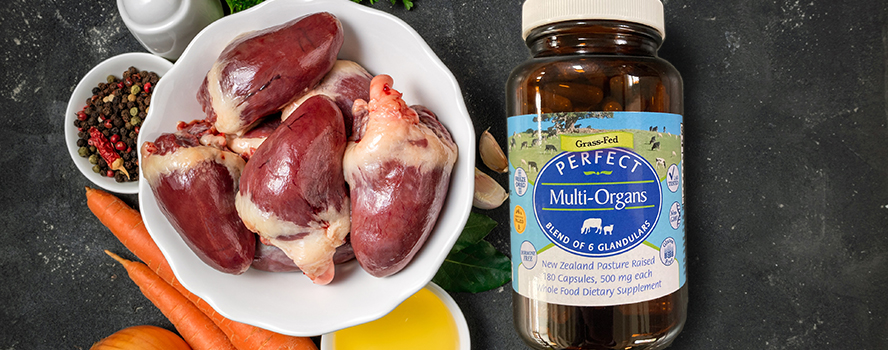Traditional Foods: What's the Hype Around Eating Organ Meat?

Just like your grandmother used to say,“Liver is good for you!” - there is a lot of truth behind it.
Organ meats are literally a nutritional powerhouse and come loaded with vitamins (especially fat-soluble vitamins A and D), and nutritional compounds such as calcium and magnesium, enzymes, all the essential amino acids, and trace minerals difficult to obtain from a modern diet. Glandular tissues are metabolically among some of the most active tissues in the body!
What Organ Meats are Traditionally Eaten?
Organ meat ('offal') and, similarly, organ supplements refer to typically organs, like the liver, or glands, like the thymus for example, from a healthy animal.
Because glands of the animal are sometimes used, organ meats are also sometimes referred to as glandulars. The most sought out tissues include mainly: adrenal, thyroid, thymus, pituitary, liver, pancreas, spleen, kidney, lung, heart, brain, and prostate.
Most of the glandular substances we use are derived from bovine (cow) and ovine (sheep) sources.
Like Treats Like:
Research suggests that glandulars improve the overall function of the gland or organ from which the extract was taken.
The goal is simple: to regain or support the activity of aged or under-functioning cells via natural cell stimulators found in the corresponding organ tissue of an animal. The gland of an animal will be reasonably close in its nutritional composition to that of human tissue, and will contain most of the necessary nutrients for healthy organ function.
A Closer Look: Glandular Therapy Studies:
In the 1960's Dr. Kment of Germany demonstrated through radioactive isotope tracing some science corroborating this long-held practice. He found that the bloodstream carries specific components from ingested glandular tissues and transports them to the corresponding glands of the person where they are then absorbed! This radioactive isotope confirmation of organ specificity was also demonstrated by Stein (1967) and several years later again by Starzyl (1979).
Even trace amounts of these unique cell stimulators had been shown to be sufficient to achieve desired results, even if some of the active components are destroyed by stomach acid. In fact, University of Florida professor Dr. Andrew Muir, discovered that the nutritionally beneficial effects of organ supplements are ineffective if they do not go through at least part of the digestive process, an indication that swallowing a glandular dietary supplement is the optimal way of benefitting from this therapy. (1)
Among building blocks are phospholipids, which are essential for cell membrane formation and function. The absorption and assimilation of these lipids from the pituitary, pancreas, spleen, adrenals, and thyroid from glandular preparations has been recognized. (2)
Hormone-Free!
Folk wisdom describes the effects of glandulars to the presence of small amounts of hormones; because of this, glandulars are often viewed as hormone replacement. But this is incorrect - In fact, the situation is quite different!
Organ derived foods provide a balance of multiple active components to promote growth and maintenance of organs and glands, rather than a single hormone or factor. Since hormones are NOT part of the glandular, taking too much is not a concern. Even when excess amounts of glandulars have been ingested, the body can easily eliminate them or pass them out of the system when not needed.
Head over to our Perfect Multi-Organ product page to learn even more about how bovine glandulars can fit into your daily routine.
references:
(1) source:https://ericbakker.com/glandular-therapy-in-clinical-practice/
(2) source:https://www.dcnutrition.com/miscellaneous-nutrients/glandulars-protomorphogens/











